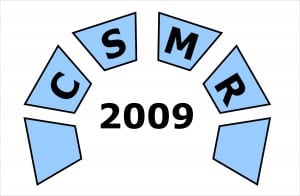 CSMR 2009 soldiers on.
CSMR 2009 soldiers on.
Today’s keynote was delivered by Tibor Gyimothy which looked at software metrics from the developer’s point of view. He presented the results of a study where developers were surveyed for their opinions on various metrics.
The developers were divided based upon such attributes as experience, platform knowledge (Java, C/C++, C#, SQL), and open source participation. They were questioned upon their opinions of metrics that measured size, complexity, coupling, and cloning, and the results were analyzed for correlations. The kinds of questions included “which metrics effect your understanding”, or “which metrics affect the testing effort”? There were many interesting differences between groups (too many to mention all), but examples included:
- It was agreed that complexity, coupling, and clones affect understanding, but experienced developers disagreed with inexperienced developers whether size was an important factor.
- Experienced developers were more insistent that smaller classes help testing.
- Inexperienced developers tend to reject large generated classes, but experienced ones accept them.
- Experienced developers prefer absolute metric values rather than the change in the values.
Aside from the keynote, architecture certainly seems to feature heavily this year at CSMR — maybe I have a faulty memory, but it seems to be more so than before. The panel discussion, apparently the first such discussion at CSMR, stimulated some slightly intense debate on the subject of collaborative tool use between academia and industry. It was a shame that we had to cut short, because I do love a good debate. I hope that I see such discussions in future conferences, but I would suggest that it be conducted with a little tighter discipline. Participants were allowed to make slide presentations of arguments and run over allotted time; I’d prefer a format where the chairman presents the arguments and takes a firmer hold of the participants (like the TV programme we have in the UK Question Time).
Looking forward to tomorrow: the software evolution track and the European projects track featuring some meaty FLOSS stuff as well as yet more evolution.